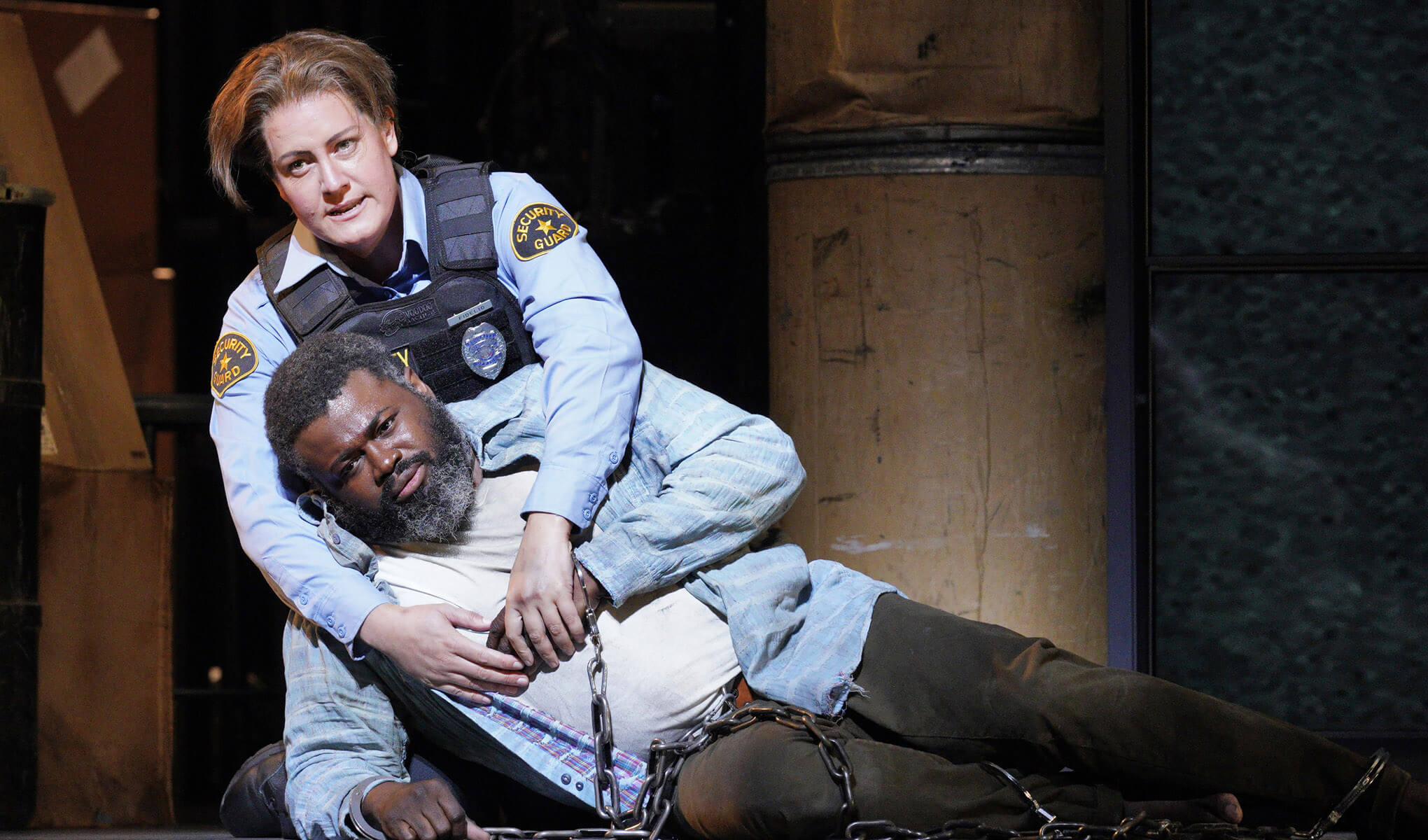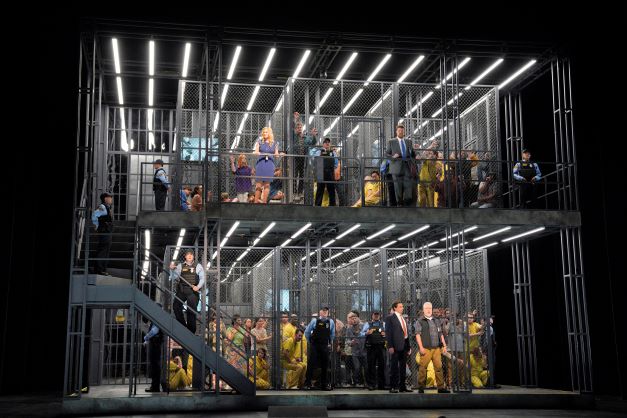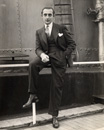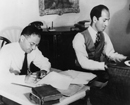Reviews
A New Fidelio That Succeeds on Every Front
SAN FRANCISCO—San Francisco Opera’s Fidelio arrived nearly overloaded with expectations. Originally planned as last season’s inaugural production to celebrate the choice of Eun Sun Kim as new music director, the show had to be put on hold for a year. On top of that, the pandemic’s disruption has prompted a good deal of existential soul-searching about the role the performing arts should play in our society—all the while sharpening the hunger for live performance.
So the rousing C major chords that brought the curtain down on opening night (October 14) resonated with a genuine sense of triumphant vindication, signaling more than the happy ending to the opera Beethoven complained was his “problem child.” This Fidelio fires on all cylinders—orchestral, vocal, theatrical—and movingly reaffirms both the power and the relevance of art.
In Matthew Ozawa’s staging, Beethoven’s story of resistance to political abuse, adapted from a French source that involved an incident during the Reign of Terror, unfolds as a taut, high-stakes drama. Updated productions suggesting parallels with modern evils—from 20th-century fascism to Guantanamo-style renditions—have become routine. But Ozawa and his design team manage to balance the preaching-to-the-converted limitations of that approach with a more complex vision of Beethoven’s ethical outlook, in which the personal and political are inseparably allied.

Elza van den Heever as Leonore and Russell Thomas as Florestan in SFO's Fidelio.
To be sure, the production’s myriad details draw clear connections to such issues as immigrant detainees and the brutality of the for-profit “corrections" industry. Alexander V. Nichols’s daunting, two-level cube, lit by JAX Messenger and Justin A. Partier, is a unit set that rotates to reveal the cruelties taking place behind and beneath the busy office space facade where the tamely comic opening scene—one of the most awkward MacGuffins in opera—plays out.
Defined by bars of steel and cold stabs of light, and occasionally walled with video monitors, this sterile, surveillance state panopticon-prison is not exactly up to date. The intentional mingling of temporal references (which extend to old-fashioned filing boxes, office machines, and handheld flashlights), together with Jessica Jahn’s vividly colorful prisoner jumpsuits, conveys a somewhat surreal atmosphere, perhaps reminiscent of the world of The Hunger Games. The smudginess proves more effective than a simpler, one-on-one correspondence with a particular brand of tyranny.
The set’s emphatic verticality serves as a neat metaphor for Beethoven’s musical drama, which plunges into profound despair in Florestan’s solo scene before Leonore’s soaring hope can be made reality. Fidelio is the fully dramatized equivalent of the Fifth Symphony’s abstract arc from darkness to light.
Intently alert to every nuance onstage, Eun Sun Kim made this transformation thrillingly persuasive. Her thorough knowledge of the score was evident in telling tempo choices and finely punctuated details, despite a few out-of-sync moments with the singers—likely the result of opening-night jitters. Kim showed special sensitivity to Beethoven’s pivot-points—the moments of epiphany on which the entire opera is built. In the opening scene’s quartet, for example, where the tone has to suddenly shift from the sitcom of mistaken identity to a different level, she elicited a warm, lyrical glow. The joyous reunion of Leonore with Florestan after danger has passed pulsated with Tristan-like ecstatic delirium.
 Elza van den Heever was an incandescent Leonore, shaping her lines with controlled power and expertly deployed richness of tone. She displayed credible fear and anxiety as she learns what she is up against—and courage that welled up from within, never seeming stagey. It’s a long wait before the first appearance of the unjustly imprisoned Florestan, but Russell Thomas used his full expressive range to develop a complex portrait of the character in his solo scene, giving voice to his pain and despair and then blossoming into lyrical transport with his consoling vision of Leonore. The two singers moreover had the chemistry to make the finale truly cathartic.
Elza van den Heever was an incandescent Leonore, shaping her lines with controlled power and expertly deployed richness of tone. She displayed credible fear and anxiety as she learns what she is up against—and courage that welled up from within, never seeming stagey. It’s a long wait before the first appearance of the unjustly imprisoned Florestan, but Russell Thomas used his full expressive range to develop a complex portrait of the character in his solo scene, giving voice to his pain and despair and then blossoming into lyrical transport with his consoling vision of Leonore. The two singers moreover had the chemistry to make the finale truly cathartic.
Though graced with less interesting music, Greer Grimsley was a thunderous, imposingly hateful Pizarro, spitting out his contempt not just for Florestan but all the prisoners at his mercy. Anne-Marie MacIntosh brought a slight edge to her sweet-toned Marzelline, seeming to crave more than mere domestic security. Ozawa emphasized the sense of tension between her and Christopher Oglesby (like MacIntosh, part of the company’s Adler Fellow young artist program), who sang the thankless role of her suitor Jaquino with almost plaintive eloquence.
As Marzelline’s father Rocco, James Creswell gave a revelatory performance that went beyond the routine of the hard-drinking, materialist jailor. He delineated Rocco’s gradual realization, through Leonore/Fidelio, of his guilt in collaborating with a corrupt regime. The just-in-time arrival of Don Fernando (Soloman Howard, who sang with a riveting bass) brought a fresh sense of anger at the abuses his friend Florestan has endured.
That denouement can seem all too complacent—hardly an abolishment of the inequities in the system. What deepened the emotional effect here was the intensity of the choral contributions—prepared by Ian Robertson, in his farewell season after 35 years as chorus director. The Prisoners’ Chorus in Act One was multihued, washed with sadness alongside its expressions of frail hope, while the final liberation chorus exploded with an ode to joy that seemed to mirror the jubilation of this return to live performance.
Bottom photo: The set is a "sterile, surveillance state panopticon-prison."
Photos: Cory Weaver/San Francisco Opera
Classical music coverage on Musical America is supported in part by a grant from the Rubin Institute for Music Criticism, the San Francisco Conservatory of Music, and the Ann and Gordon Getty Foundation. Musical America makes all editorial decisions.





 FEATURED JOBS
FEATURED JOBS

 RENT A PHOTO
RENT A PHOTO


